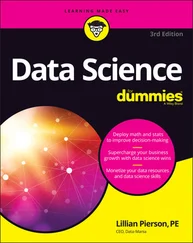 Operational applications almost always use a relational database, which manages concurrency control among their users and applications. In simple terms, hundreds or even thousands of users can add new data and make changes to a relational database without interfering with each other’s work and corrupting the database. A data lake, however, is built on storage technology that is optimized for retrieving data for analysis and doesn’t support concurrency control for update operations.
Operational applications almost always use a relational database, which manages concurrency control among their users and applications. In simple terms, hundreds or even thousands of users can add new data and make changes to a relational database without interfering with each other’s work and corrupting the database. A data lake, however, is built on storage technology that is optimized for retrieving data for analysis and doesn’t support concurrency control for update operations.
Many vendors are working on new technology that will allow you to build a data lake for operational, as well as analytical purposes. This technology is still a bit down the road from full operational viability. For the time being, you’ll build a data lake by copying data from many different source applications.
What exactly does “copying data” look like, and how frequently do you need to copy data into the data lake?
 Data lakes mostly use a technique called ELT, which stands for either extract, transform, and load or extraction, transformation, and loading. With ELT, you “blast” your data into a data lake without having to spend a great deal of time profiling and understanding the particulars of your data. You extract data (the E part of ELT ) from its original home in a source application, and then, after that data has been transmitted to the data lake, you load the data (the L ) into its initial storage location. Eventually, when it’s time for you to use the data for analytical purposes, you’ll need to transform the data (the T ) into whatever format is needed for a specific type of analysis.
Data lakes mostly use a technique called ELT, which stands for either extract, transform, and load or extraction, transformation, and loading. With ELT, you “blast” your data into a data lake without having to spend a great deal of time profiling and understanding the particulars of your data. You extract data (the E part of ELT ) from its original home in a source application, and then, after that data has been transmitted to the data lake, you load the data (the L ) into its initial storage location. Eventually, when it’s time for you to use the data for analytical purposes, you’ll need to transform the data (the T ) into whatever format is needed for a specific type of analysis.
 For data warehousing — the predecessor to data lakes that you’re almost certainly still also using — data is copied from source applications to the data warehouse using a technique called ETL, rather than ELT. With ETL, you need to thoroughly understand the particulars of your data on its way into the data warehouse, which requires the transformation (T) to occur before the data is loaded (L) into its usable form.
For data warehousing — the predecessor to data lakes that you’re almost certainly still also using — data is copied from source applications to the data warehouse using a technique called ETL, rather than ELT. With ETL, you need to thoroughly understand the particulars of your data on its way into the data warehouse, which requires the transformation (T) to occur before the data is loaded (L) into its usable form.
With ELT, you can control the latency, or “freshness,” of data that is brought into the data lake. Some data needed for critical, real-time analysis can be streamed into the data lake, which means that a copy is sent to the data lake immediately after data is created or updated within a source application. (This is referred to as a low-latency data feed. ) You essentially push data into your data lake piece by piece immediately upon the creation of that data.
Other data may be less time-critical and can be “batched up” in a source application and then periodically transmitted in bulk to the data lake.
You can specify the latency requirements for every single data feed from every single source application.
 The ELT model also allows you to identify a new source of data for your data lake and then very quickly bring in the data that you need. You don’t need to spend days or weeks dissecting the ins and outs of the new data source to understand its structure and business rules. You “blast” the data into your data lake in the natural form of the data: database tables, MP4 files, or however the data is stored. Then, when it’s time to use that data for analysis, you can proceed to dig into the particulars and get the data ready for reports, machine learning, or however you’re going to be using and analyzing the data.
The ELT model also allows you to identify a new source of data for your data lake and then very quickly bring in the data that you need. You don’t need to spend days or weeks dissecting the ins and outs of the new data source to understand its structure and business rules. You “blast” the data into your data lake in the natural form of the data: database tables, MP4 files, or however the data is stored. Then, when it’s time to use that data for analysis, you can proceed to dig into the particulars and get the data ready for reports, machine learning, or however you’re going to be using and analyzing the data.
Everyone visits the data lake
Take a look around your organization today. Chances are, you have dozens or even hundreds of different places to go for reports and analytics. At one time, your company probably had the idea of building an enterprise data warehouse that would provide data for almost all the analytical needs across the entire company. Alas, for many reasons, you instead wound up with numerous data marts and other environments, very few of which work together. Even enterprise data warehouses are often accompanied by an entire portfolio of data marts in the typical organization.
Great news! The data lake will finally be that one-stop shopping place for the data to meet almost all the analytical needs across your entire enterprise.
Enterprise-scale data warehousing fell short for many different reasons, including the underlying technology platforms. Data lakes overcome those shortfalls and provide the foundation for an entirely new generation of integrated, enterprise-wide analytics.
 Even with a data lake, you’ll almost certainly still have other data environments outside the data lake that support analytics. Your data lake objective should be to satisfy almost all your organization’s analytical needs and be the go-to place for data. If a few other environments pop up here and there, that’s okay. Just be careful about the overall proliferation of systems outside your data lake; otherwise, you’ll wind up right back in the same highly fragmented data mess that you have today before beginning work on your data lake.
Even with a data lake, you’ll almost certainly still have other data environments outside the data lake that support analytics. Your data lake objective should be to satisfy almost all your organization’s analytical needs and be the go-to place for data. If a few other environments pop up here and there, that’s okay. Just be careful about the overall proliferation of systems outside your data lake; otherwise, you’ll wind up right back in the same highly fragmented data mess that you have today before beginning work on your data lake.
Suppose you head off for a weeklong vacation to your favorite lake resort. The people who run the resort have divided the lake into different zones, each for a different recreational purpose. One zone is set aside for water-skiing; a second zone is for speedboats, but no water-skiing is permitted in that zone; a third zone is only for boats without motors; and a fourth zone allows only swimming but no water vessels at all.
The operators of the resort could’ve said, “What the heck, let’s just have a free-for-all out on the lake and hope for the best.” Instead, they wisely established different zones for different purposes, resulting in orderly, peaceful vacations (hopefully!) rather than chaos.
A data lake is also divided into different zones. The exact number of zones may vary from one organization’s data lake to another’s, but you’ll always find at least three zones in use — bronze, silver, and gold — and sometimes a fourth zone, the sandbox.
Bronze, silver, and gold aren’t “official” standardized names, but they are catchy and easy to remember. Other names that you may find are shown in Table 1-1.
TABLE 1-1Data Lake Zones
| Recommended Zone Name |
Other Names |
| Bronze zone |
Raw zone, landing zone |
| Silver zone |
Cleansed zone, refined zone |
| Gold zone |
Performance zone, curated zone, data model zone |
| Sandbox |
Experimental zone, short-term analytics zone |
All the data lake zones, including the sandbox, are discussed in more detail in Part 2, but the following sections provide a brief overview.
 The boundaries and borders between your data lake zones can be fluid (Fluid? Get it?), especially with streaming data, as I explain in Part 2.
The boundaries and borders between your data lake zones can be fluid (Fluid? Get it?), especially with streaming data, as I explain in Part 2.
Читать дальше

 Operational applications almost always use a relational database, which manages concurrency control among their users and applications. In simple terms, hundreds or even thousands of users can add new data and make changes to a relational database without interfering with each other’s work and corrupting the database. A data lake, however, is built on storage technology that is optimized for retrieving data for analysis and doesn’t support concurrency control for update operations.
Operational applications almost always use a relational database, which manages concurrency control among their users and applications. In simple terms, hundreds or even thousands of users can add new data and make changes to a relational database without interfering with each other’s work and corrupting the database. A data lake, however, is built on storage technology that is optimized for retrieving data for analysis and doesn’t support concurrency control for update operations. Data lakes mostly use a technique called ELT, which stands for either extract, transform, and load or extraction, transformation, and loading. With ELT, you “blast” your data into a data lake without having to spend a great deal of time profiling and understanding the particulars of your data. You extract data (the E part of ELT ) from its original home in a source application, and then, after that data has been transmitted to the data lake, you load the data (the L ) into its initial storage location. Eventually, when it’s time for you to use the data for analytical purposes, you’ll need to transform the data (the T ) into whatever format is needed for a specific type of analysis.
Data lakes mostly use a technique called ELT, which stands for either extract, transform, and load or extraction, transformation, and loading. With ELT, you “blast” your data into a data lake without having to spend a great deal of time profiling and understanding the particulars of your data. You extract data (the E part of ELT ) from its original home in a source application, and then, after that data has been transmitted to the data lake, you load the data (the L ) into its initial storage location. Eventually, when it’s time for you to use the data for analytical purposes, you’ll need to transform the data (the T ) into whatever format is needed for a specific type of analysis. Even with a data lake, you’ll almost certainly still have other data environments outside the data lake that support analytics. Your data lake objective should be to satisfy almost all your organization’s analytical needs and be the go-to place for data. If a few other environments pop up here and there, that’s okay. Just be careful about the overall proliferation of systems outside your data lake; otherwise, you’ll wind up right back in the same highly fragmented data mess that you have today before beginning work on your data lake.
Even with a data lake, you’ll almost certainly still have other data environments outside the data lake that support analytics. Your data lake objective should be to satisfy almost all your organization’s analytical needs and be the go-to place for data. If a few other environments pop up here and there, that’s okay. Just be careful about the overall proliferation of systems outside your data lake; otherwise, you’ll wind up right back in the same highly fragmented data mess that you have today before beginning work on your data lake.










